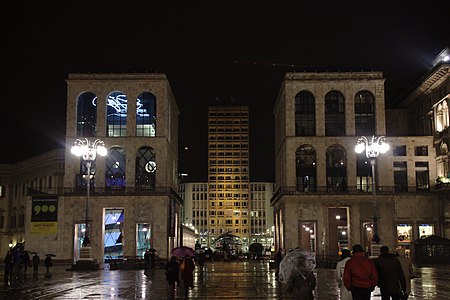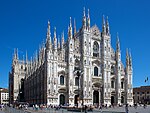Palazzo dell'Arengario
Government buildings completed in 1956Houses completed in 1956Palaces in MilanTourist attractions in Milan

The Palazzo dell'Arengario is a Fascist-era complex of two symmetrical buildings in Piazza del Duomo, the central piazza of Milan, Italy. It was completed in the 1950s and currently houses the Museo del Novecento, a museum dedicated to 20th-century art. The word "arengario" refers to its original function as a local government seat in the Fascist period.
Excerpt from the Wikipedia article Palazzo dell'Arengario (License: CC BY-SA 3.0, Authors, Images).Palazzo dell'Arengario
Via Guglielmo Marconi, Milan Municipio 1
Geographical coordinates (GPS) Address External links Nearby Places Show on map
Geographical coordinates (GPS)
| Latitude | Longitude |
|---|---|
| N 45.4635 ° | E 9.19 ° |
Address
Palazzo dell'Arengario
Via Guglielmo Marconi
20122 Milan, Municipio 1
Lombardy, Italy
Open on Google Maps









